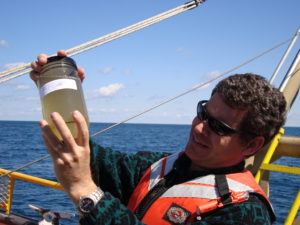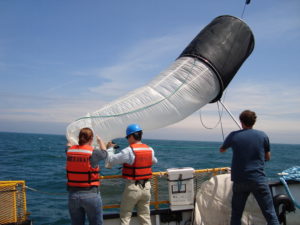House Passes Bill, Bolstering Defenses Against Asian Carp, Toxic Algae
ANN ARBOR, Mich. (July 29, 2020) — The House of Representatives today passed the Water Resources Development Act of 2020 by a voice vote. The Healing Our Waters-Great Lakes Coalition supports several core Great Lakes and clean water priorities in the bill that help stop Asian carp, halt toxic algal outbreaks, and create incentives for nature-based solutions to flooding and other environmental problems. The bill also calls for expanding an existing study to look at the impact of record high lake levels on coastal flooding, storm damage, ecosystem restoration and recreation.
“This bill advances solutions to confront serious threats facing the Great Lakes and communities—and the investments it makes in clean water priorities will benefit our environment and economy,” said Chad Lord, policy director for the Healing Our Waters-Great Lakes Coalition. “We thank members of the Great Lakes congressional delegation for standing up for our Great Lakes, drinking water, public health, and quality of life.”
The Senate Committee on Environment and Public Works passed similar water infrastructure legislation in April, which not only included the Water Resources Development Act, but also supported critical investments in stormwater, drinking water, and wastewater infrastructure.
“Water infrastructure legislation is moving in both the House and Senate,” continued Lord. “Clean water is a basic need. Now is the time for Congress to come together and pass a water infrastructure bill that helps Great Lakes communities ensure everyone has access to safe, affordable water.”
The Water Resources Development Act (H.R. 7575) authorizes the construction of the Brandon Road Lock and Dam to prevent invasive Asian Carp from entering the Great Lakes and wreaking environmental and economic harm.
The bill also contains provisions to study and combat the rise of toxic algal blooms, which can poison drinking water and threaten the health of communities which rely on the Great Lakes for water.
In addition, the 2020 Water Resources Development Act includes provisions for:
- Nature-based solution for flood control projects in which wetlands, parks, forests, and rain gardens absorb rain and storm water before it overwhelms communities.
- Studies of the effects that rising lake levels are having on Great Lakes communities.
- Technical assistance to non-Federal interests and federal agencies to plan for increased flooding and extreme weather caused by climate change.
- A pilot program to explore strategies for damage reduction during extreme weather events for economically disadvantaged communities.
The Coalition sent a letter to the Senate Committee outlining provisions it supports in April. You can read it here.
Congress must reconcile the two bills this fall before sending final legislation to the President.
The post House Passes Bill, Bolstering Defenses Against Asian Carp, Toxic Algae appeared first on Healing Our Waters Coalition.
Healing Our Waters Coalition
https://healthylakes.org/house-passes-bill-bolstering-defenses-against-asian-carp-toxic-algae/






